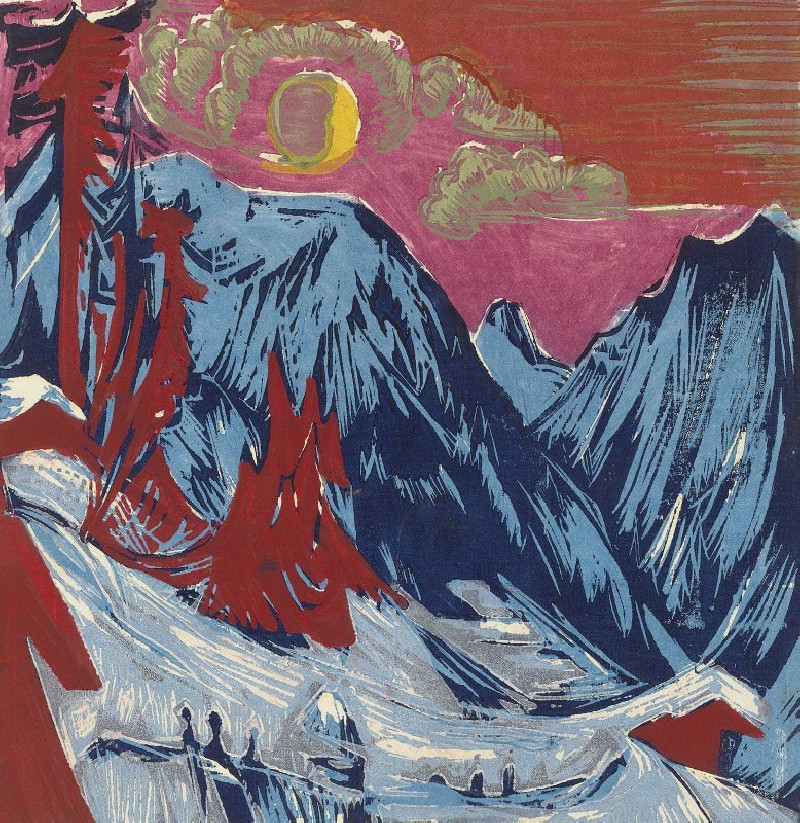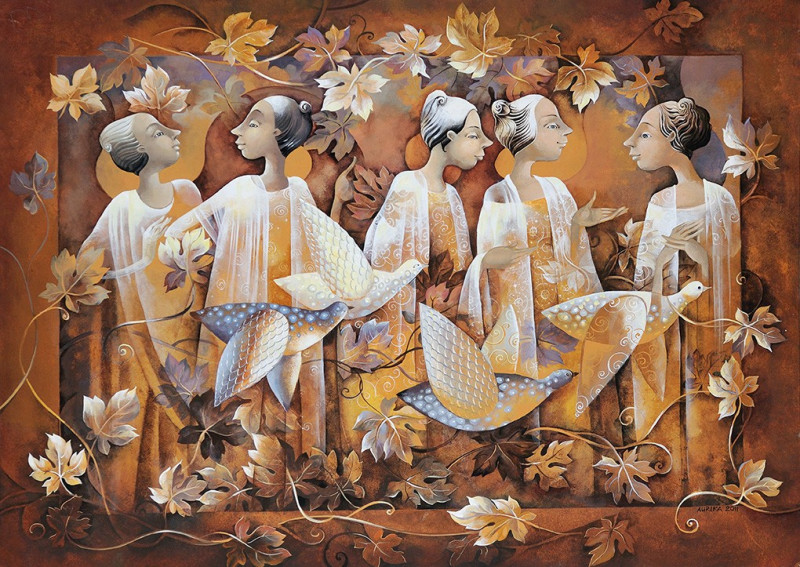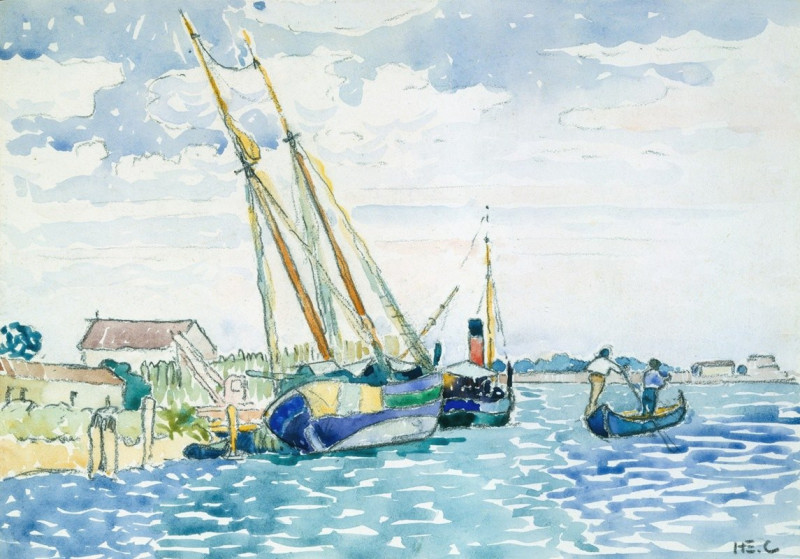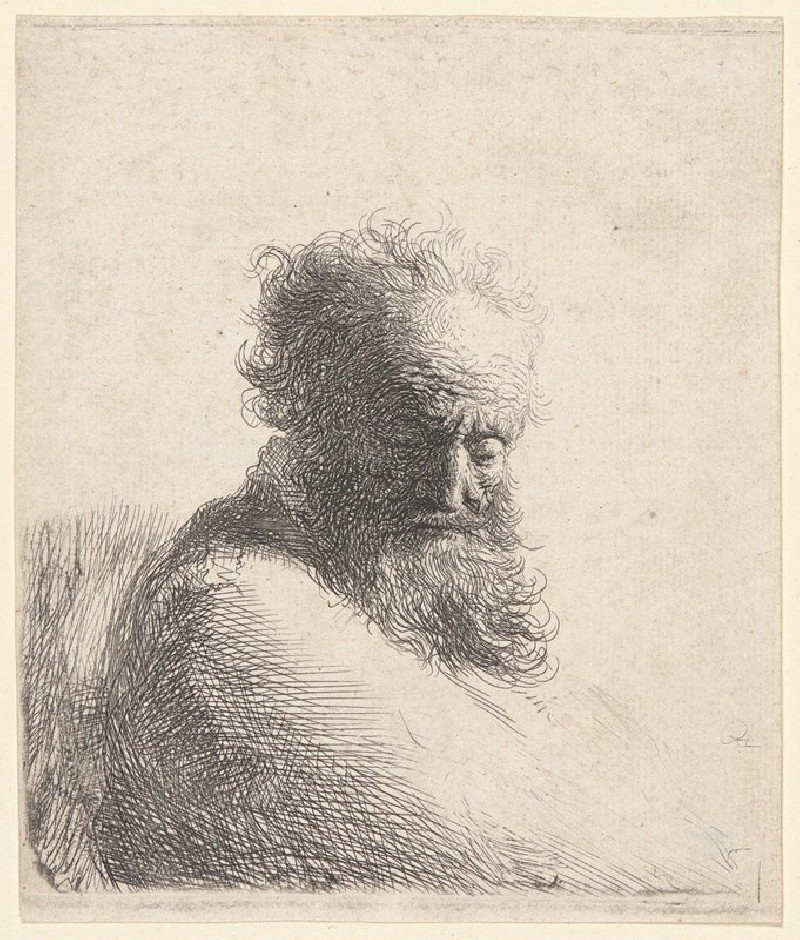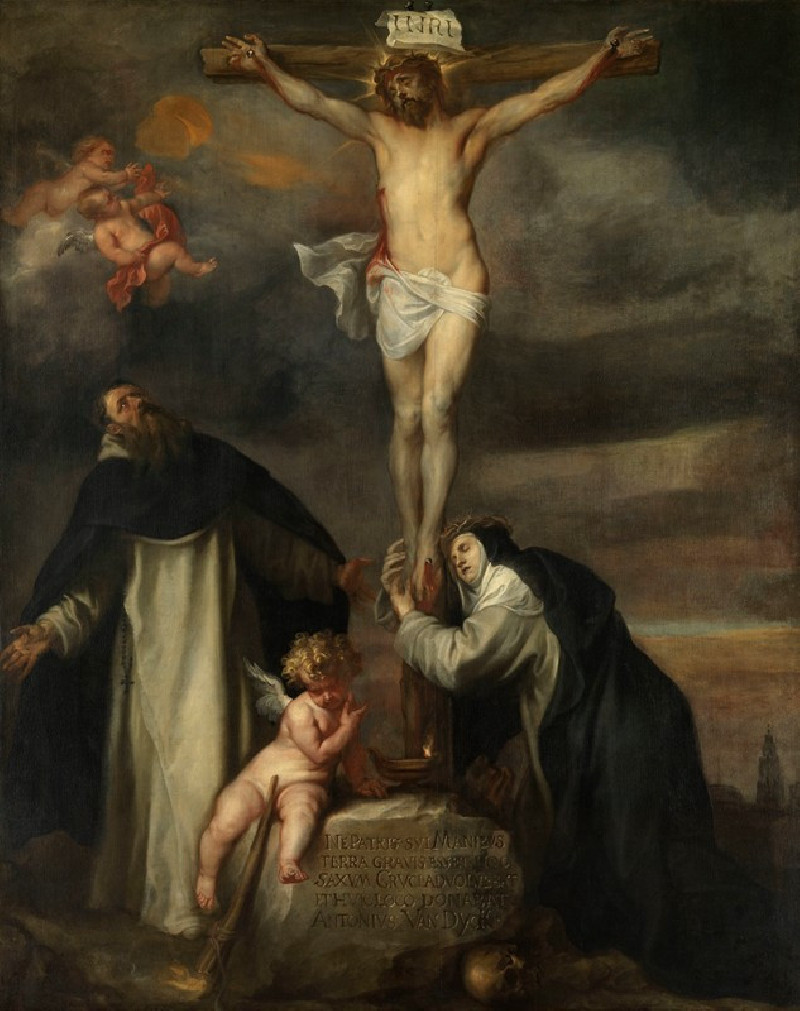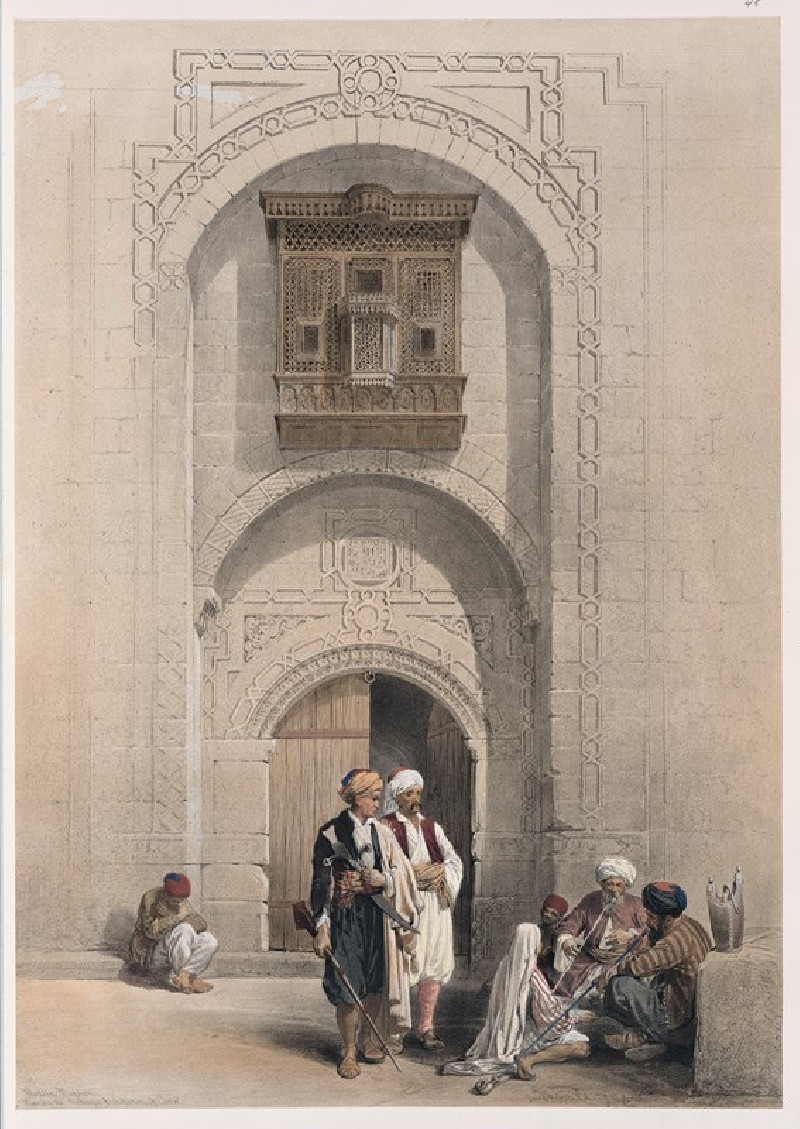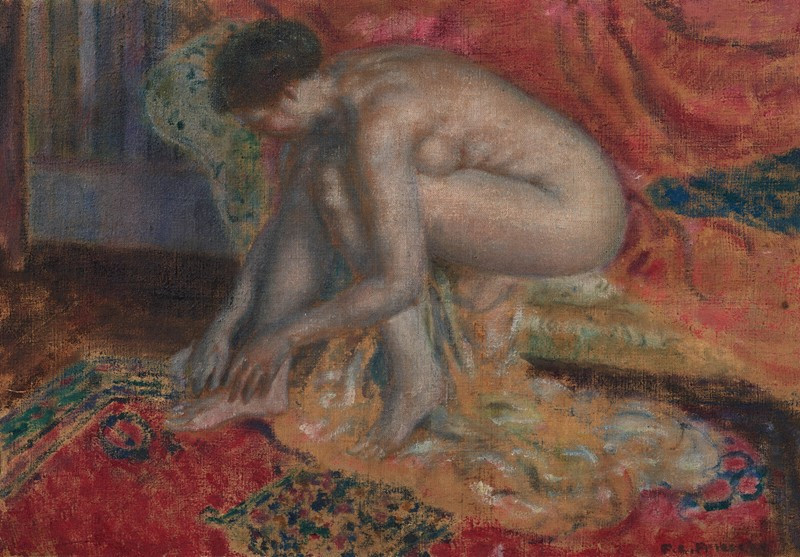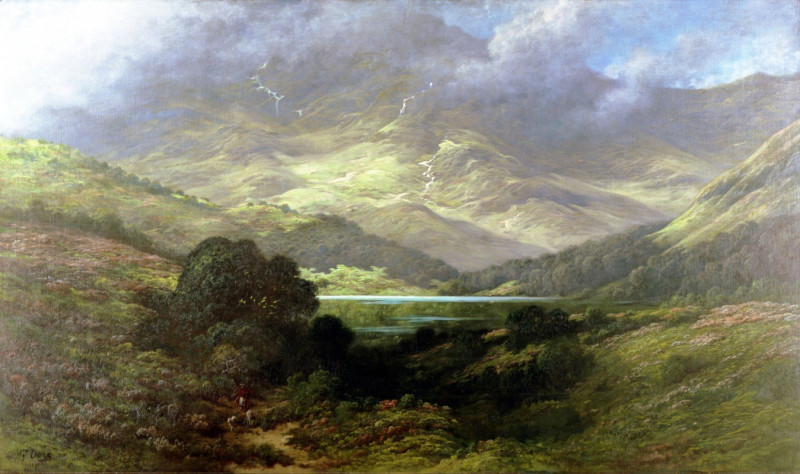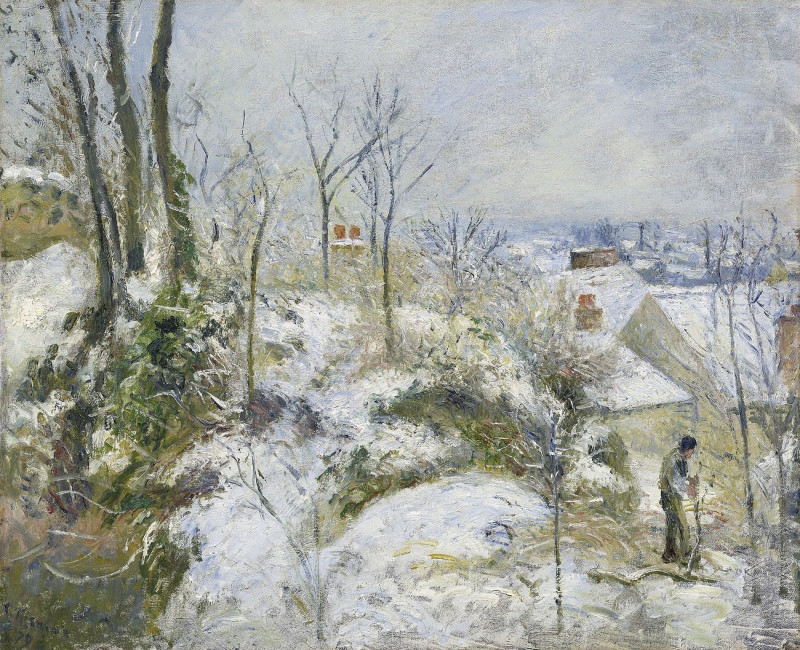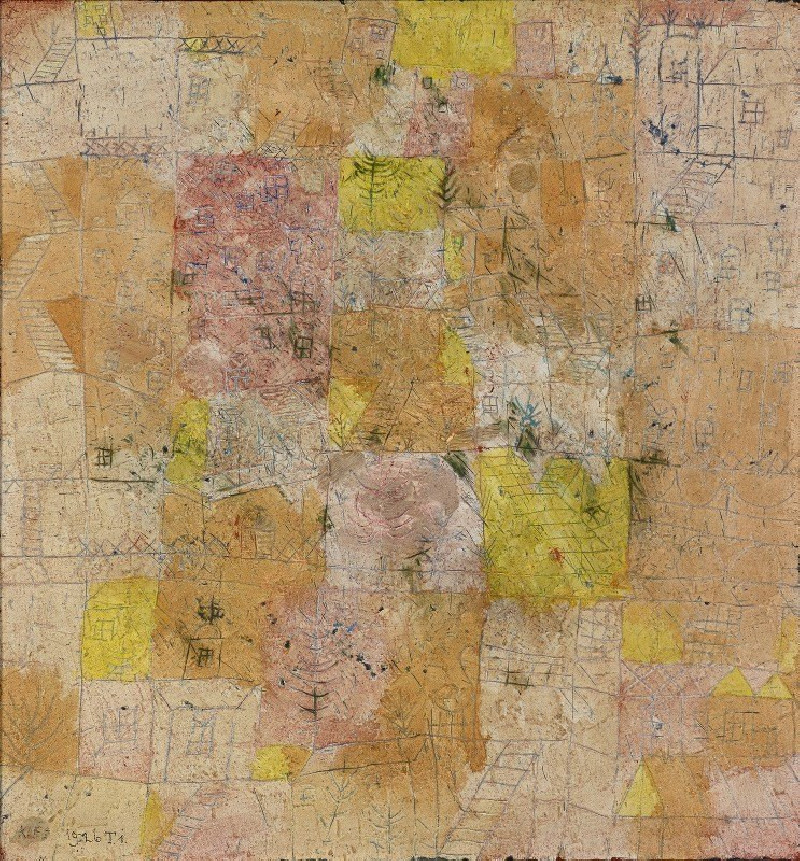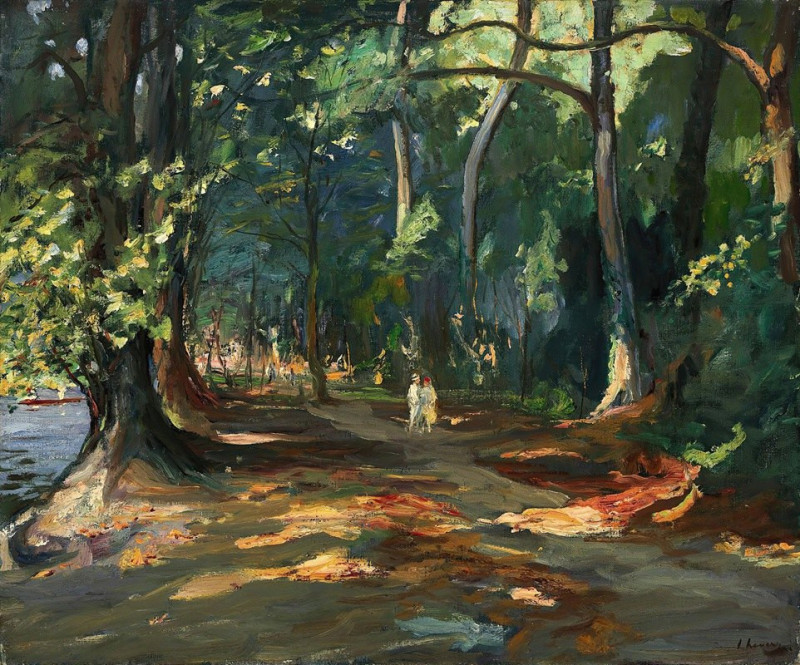Längmatte bei Monduntergang (1919)
Technique: Giclée quality print
Recommended by our customers
More about this artwork
Dive into the expressive world of Ernst Ludwig Kirchner with his striking painting, "Längmatte bei Monduntergang" (Längmatte at Moonset) created in 1919. This masterpiece encapsulates Kirchner's bold and dynamic approach to color and form, demonstrating why he is a pivotal figure in the Expressionist movement.The painting portrays an alpine landscape at the moment the moon descends in the sky. The artist uses a vivid palette dominated by deep blues and contrasting reds to capture the rugged textures of the mountain terrain. Sharp, jagged peaks stretch upwards, wrestling against the sweeping motions of the vibrant red sky, where pinks and purples swirl around a glowing moon. The sky, alive with movement, contrasts dramatically with the solidity and darkness of the mountains.In the foreground, dark silhouettes of trees add a mysterious quality to the scene, leading the viewer’s eye into the depths of the moonlit mountainscape. The use of angular lines and bold, unblended colors enhances the emotional intensity of the scene, inviting viewers to feel the raw, untamed energy of nature under moonlight."Längmatte bei Monduntergang" not only displays Kirchner’s trademark technique of using color and form to convey emotion but also reflects the artist’s deep connection and response to the natural world.
Delivery
Returns
Ernst Ludwig Kirchner (1880–1938) was one of the most important German Expressionist painters. He was a co-founder of Die Brücke, a group of German expressionist artists formed in Dresden in 1905. Die Brücke and Kirchner took inspiration from Vincent Van Gogh and Edvard Munch, as well as African and Oceanic art. They used woodblock printing as a medium to showcase their signature style: flat, unrealistic images with vivid colors. The recurring themes in Kirchner's artworks included exotic cultures, faraway landscapes, self-portraits, dancers and Berlin street life. His paintings and prints effectively portrayed non-European cultures despite the fact that he never traveled outside of Europe.

